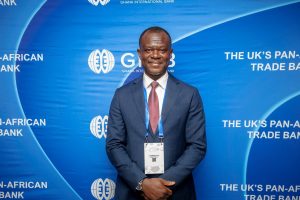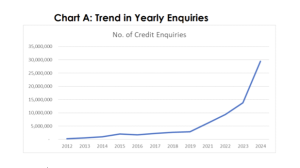
By Ebenezer Chike Adjei NJOKU
The Bank of Ghana (BoG) is using gold as a central tool to rebuild reserves, stabilise the currency and restore investor confidence after losing access to international capital markets during the country’s recent debt crisis.
Speaking at the CNVERGE’25 hosted by the Ghana International Bank (GHIB), First Deputy Governor Dr. Zakari Mumuni said the central bank’s strategy of leveraging domestic gold resources had become critical for hedging sovereign risk and insulating the economy from external shocks.
The nation’s macroeconomic troubles escalated in the aftermath of the Covid-19 pandemic and the Russia-Ukraine war, which deepened fiscal and debt vulnerabilities.
The downturn triggered sovereign credit downgrades and shut the country out of global debt markets, depriving it of a key source of foreign exchange inflows. With investor confidence weakened and external funding curtailed, government finances deteriorated and reliance on central bank financing added to inflationary pressures.
“These events exposed structural vulnerabilities in our fiscal and debt frameworks,” Dr. Mumuni said, noting that the crisis forced a rethink of the country’s reserve management strategy to build greater resilience against future shocks.
The centrepiece of the policy response was the Domestic Gold Purchase Programme (DGPP), launched in June 2021 to double the central bank’s gold reserves within five years from a starting point of 8.74 tonnes. The programme aimed to diversify the foreign exchange reserve portfolio, use gold holdings to secure cheaper collateralised financing, and strengthen market confidence through more robust reserve buffers.
Before the DGPP, Ghana exported nearly all its gold output despite being Africa’s top producer in 2019 and the world’s seventh-largest. Gold accounted for more than half of export earnings but featured little in reserve assets, with the country relying heavily on cocoa syndicated loans and Eurobond proceeds.
By June 2025, the central bank had purchased 145.95 tonnes of gold under the programme, sold 86.77 tonnes for foreign currency to bolster reserves, and increased physical holdings to 32.99 tonnes. The precious metal reserve hit 34.4 ounces in July.

The bank also channeled 27.63 tonnes into the Gold for Oil (G4O) initiative, launched in 2022 to exchange gold for petroleum products and mitigate the impact of soaring oil prices on inflation and fuel costs. Nonetheless, the BoG has halted the gold for oil programme on the back of some losses incurred.
Dr. Mumuni noted the gold-backed measures had contributed to exchange rate stability, eased inflationary pressures and supported Ghana’s credit rating upgrade to B- with a stable outlook in June 2025.
“The strategy has boosted investor confidence and restored some macroeconomic stability,” he said. The bank also introduced the Ghana Gold Coin, a high-purity investment product intended as a store of value, inflation hedge and alternative asset class. It can also be used as a monetary policy tool to manage excess liquidity.
While Dr. Mumuni highlighted opportunities for banks and traders in structured commodity products, commodity-backed financing and value addition in the gold supply chain; he cautioned that price volatility, market speculation and environmental concerns remained risks to manage.
“The global economy has entered a new era where commodities are not just exported, but strategically leveraged to build resilience and drive inclusive growth. The Bank of Ghana is committed to this shift,” he said.
Global developments
Over the past year, global gold prices have surged to record highs, with bullion climbing from around US$2,100 per ounce in early 2024 to between US$3,500 and US$3,534 in recent months. The increase—amounting to more than 39 percent year-on-year—marks one of the steepest rallies in recent history. Traders and analysts point to a combination of geopolitical instability, strong institutional demand, and favourable monetary conditions as the primary catalysts behind the metal’s sustained ascent.
A series of global flashpoints have reinforced gold’s reputation as a safe-haven asset. Heightened U.S.–China trade tensions, new tariffs on Swiss-refined bullion, and ongoing conflicts in the Middle East have driven investors toward the relative security of precious metals. At the same time, central banks; particularly in emerging markets, have been accelerating purchases to diversify their reserves away from the U.S. dollar, collectively adding over 1,000 tonnes for the second consecutive year.
Monetary policy expectations have further buoyed sentiment. Concerns over persistent inflation, coupled with speculation that major central banks may soon adopt more accommodative stances, have undermined the dollar and boosted gold’s appeal as a hedge.
The result is a price trajectory that market participants say reflects not just short-term risk aversion, but a deeper reassessment of gold’s role in global finance. Nonetheless, analysts believe the BoG is being cautious in its acquisition so as not to over-expose itself to volatility in an increasingly erratic geopolitical setup.
The post BoG leveraging gold, to hedge debt risks, restore confidence appeared first on The Business & Financial Times.
Read Full Story













Facebook
Twitter
Pinterest
Instagram
Google+
YouTube
LinkedIn
RSS